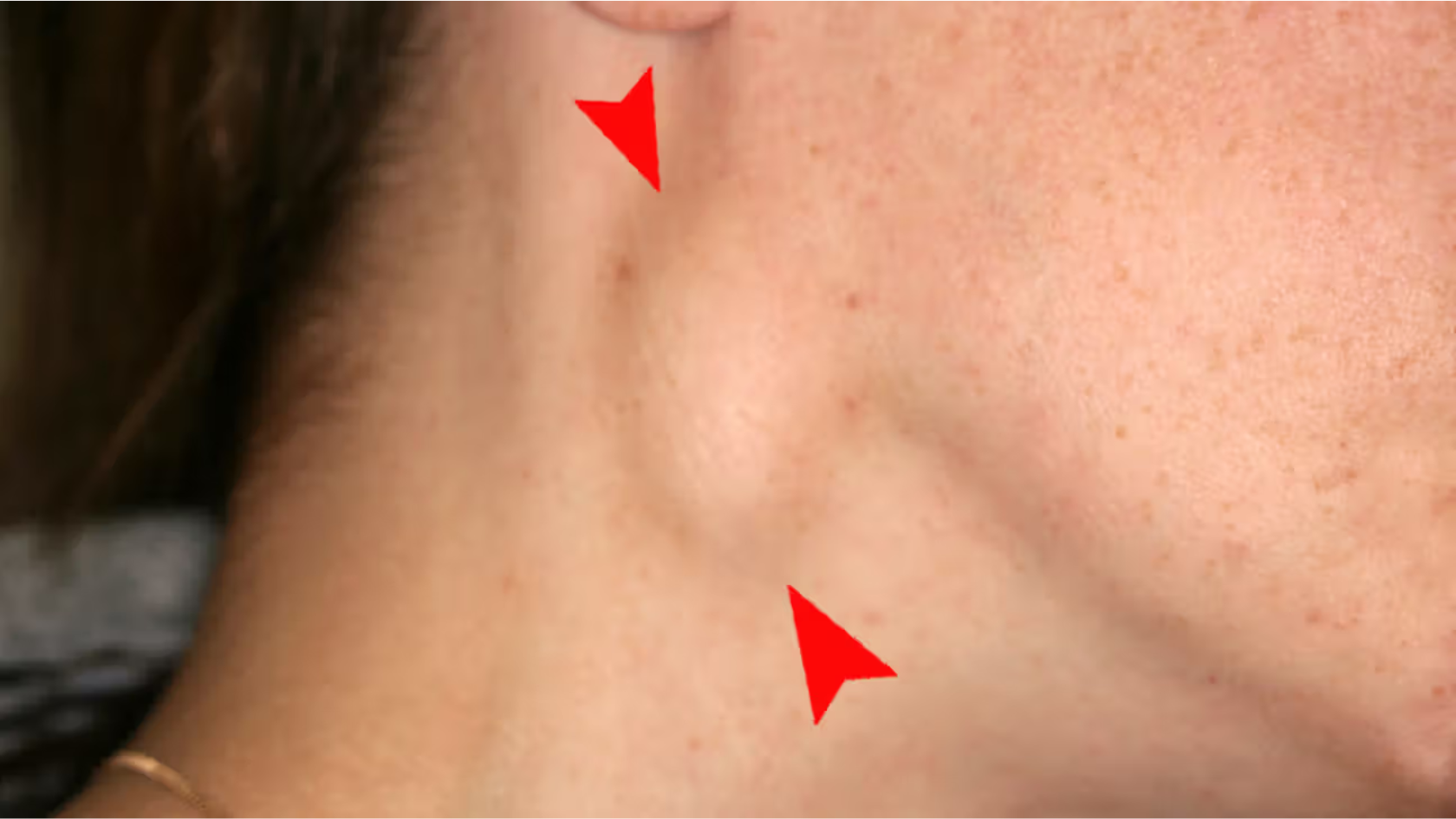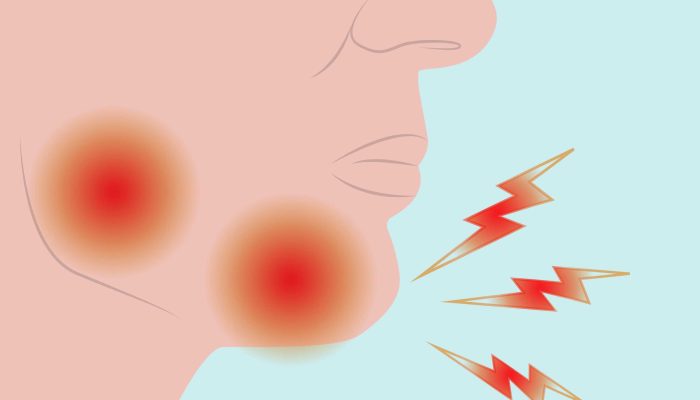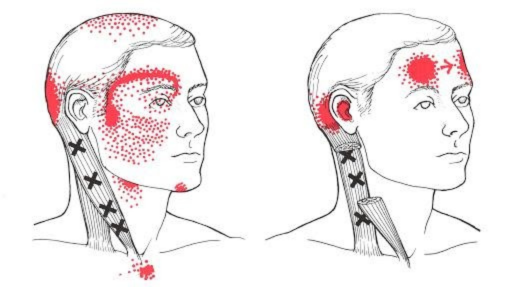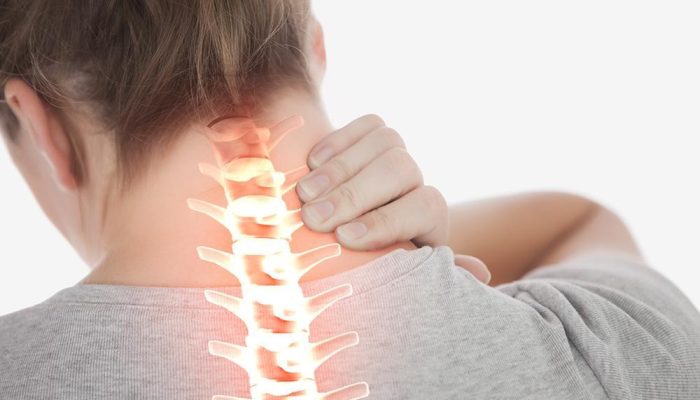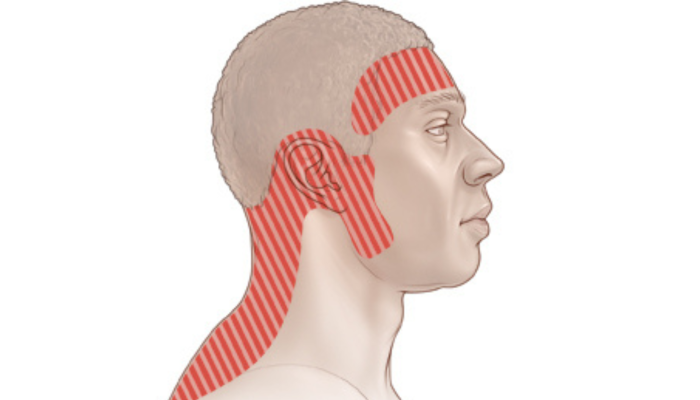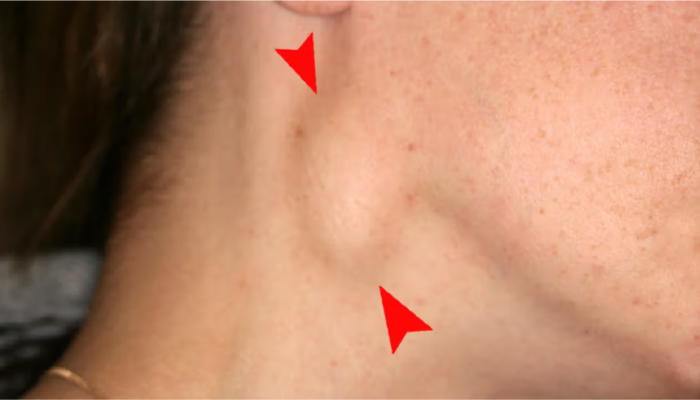
Causes of a Pea-Sized Lump in the Neck
Discovering a pea-sized lump in the neck can be alarming. Various factors could contribute to this condition, ranging from benign to serious. Here are some common causes:
Swollen Lymph Nodes
One of the most common reasons for a small lump in the neck is swollen lymph nodes. These can swell due to infections, inflammation, or even cancer. Lymph nodes act as filters for harmful substances and can become enlarged when they’re working to fight off infections.
Lipoma
A lipoma is a benign tumor made up of fat tissue. These are generally harmless and feel soft and movable under the skin. Lipomas can develop anywhere in the body, including the neck, and often do not require treatment unless they cause discomfort.
Epidermoid Cyst
Epidermoid cysts are small, benign lumps beneath the skin. They form when skin cells multiply instead of shedding. These cysts are typically painless and slow-growing but can become infected or inflamed.
Sebaceous Cyst
Sebaceous cysts are similar to epidermoid cysts but are filled with sebum, an oily substance produced by sebaceous glands. These cysts can develop in the neck and might require drainage if they become large or infected.
Congenital Neck Masses
Some Pea-Sized lumps in the neck are congenital, meaning they are present at birth. These can include branchial cleft cysts or thyroglossal duct cysts. While typically benign, they may require surgical removal if they cause symptoms.
Muscle Injury
A Pea-Sized lump can also form in the neck muscle due to injury. Muscle strain or a pulled neck muscle can lead to a small, painful Pea-Sized lump. This often occurs due to overuse or trauma to the neck muscles.
Insect Bite or Sting
An insect bite or sting can result in a small, pea-sized lump in the neck. The body’s reaction to the bite or sting can cause localized swelling and inflammation.
Cancer
While less common, a Pea-Sized lump in the neck can sometimes be a sign of cancer. This could involve the lymph nodes, salivary glands, or thyroid gland. It’s essential to get any new or persistent lumps checked by a healthcare professional.
Possible Causes by Location
The location of the Pea-Sized lump in the neck can provide clues to its cause.
Pea-Sized Lump on Back of Neck
A lump on the back of the neck is often related to swollen lymph nodes due to an infection or muscle strain. It could also be a lipoma or a cyst.
Pea-Sized Lump on Side of Neck
Pea-Sized Lumps on the side of the neck are frequently swollen lymph nodes. They might also be congenital masses or, in rare cases, related to thyroid issues.
Pea-Sized Lump in Neck Above Collarbone
A lum.p above the collarbone may indicate a swollen lymph node or, less commonly, a cyst or tumor. This area is particularly concerning and should be evaluated promptly by a healthcare provider.
What if the Lump Moves?
If the lum.p in your neck moves slightly under the skin, it is likely a benign condition like a lipoma or a cyst. These types of lumps are usually soft and can shift with slight pressure. However, if the lum.p is hard, fixed, or causes pain, it warrants further investigation to rule out more serious conditions.
Diagnosing the Cause
Diagnosing the cause of a lump in the neck involves a thorough evaluation by a healthcare provider. This process typically includes:
- Medical History and Physical Examination: Your doctor will ask about your medical history and perform a physical examination, feeling the lump and surrounding areas.
- Imaging Tests: Ultrasound, CT scans, or MRIs can provide detailed images of the lump and help identify its nature.
- Biopsy: In some cases, a biopsy may be necessary to determine if the lump is cancerous. This involves taking a small sample of tissue from the lump for laboratory analysis.
Treating the Underlying Cause
Treatment for a lump in the neck depends on its cause.
Viral Infections
If the lum.p is due to a viral infection, treatment focuses on managing symptoms until the infection resolves. This might include rest, fluids, and over-the-counter medications.
Bacterial Infection
Bacterial infections that cause swollen lymph nodes often require antibiotics. Your doctor will prescribe the appropriate medication to treat the underlying infection.
Sebaceous Cyst
A sebaceous cyst might be treated with drainage or surgical removal if it becomes large, painful, or infected. This procedure is usually simple and performed under local anesthesia.
Muscle Injury
Treatment for a lum.p caused by muscle injury typically involves rest, ice, compression, and elevation (RICE). Over-the-counter pain medications can help manage pain and inflammation.
Cancer
If the lum.p is cancerous, treatment will depend on the type and stage of cancer. This may include surgery, radiation therapy, chemotherapy, or a combination of these treatments.
Takeaway
A pea-sized lum.p in the neck can have many causes, from benign conditions like cysts and lipomas to more serious issues such as infections and cancer. It’s essential to monitor any new lumps and seek medical evaluation to determine the cause and appropriate treatment. Early diagnosis and intervention can help ensure the best possible outcome.
When to See a Doctor
While many lum.ps in the neck are benign, it’s important to seek medical advice if you notice any of the following symptoms:
- The lum.p persists for more than a few weeks.
- The lum.p is hard, immovable, or growing.
- You experience pain, redness, or warmth around the lum.p.
- You have other symptoms such as unexplained weight loss, night sweats, or fever.
- The lum.p affects your ability to swallow or breathe.
Prevention and Self-Care
Though not all neck lumps can be prevented, there are steps you can take to reduce the risk of some causes:
- Practice good hygiene: Regular handwashing and avoiding close contact with sick individuals can help prevent infections that cause swollen lymph nodes.
- Protect your skin: Use insect repellent and cover exposed skin to avoid bites and stings.
- Maintain a healthy lifestyle: A balanced diet, regular exercise, and not smoking can help keep your immune system strong and reduce the risk of cancer.
Understanding Neck Muscle Lumps
Neck muscle lum.ps, such as those resulting from muscle strain or injury, often require specific attention. Here are some common scenarios and their implications:
Lump in Neck Muscle from Injury
A pulled neck muscle lum.p is usually a result of overexertion or sudden movements. It is often accompanied by:
- Pain and tenderness in the affected area
- Stiffness and reduced range of motion
- Possible swelling or bruising
Treatment generally includes:
- Rest and avoiding activities that strain the neck
- Applying ice to reduce swelling
- Using over-the-counter pain relievers
Lump on Neck Muscle Tendon
Tendon-related lum.ps, such as cysts in neck muscle tendons, can occur due to overuse or repetitive motions. They might require:
- Rest and modification of activities
- Physical therapy to strengthen and stretch the muscles and tendons
- In severe cases, medical intervention may be necessary
Differentiating Between Lymph Node and Muscle Knot
A common concern is distinguishing between a swollen lymph node and a muscle knot in the neck:
- Lymph nodes: Usually soft, movable, and tender when swollen. Often associated with infections.
- Muscle knots: Typically firm, tender, and may cause a tight sensation in the neck. Often related to muscle strain or tension.
Knowing these differences can help you describe your symptoms more accurately to a healthcare provider.
Lump on Side of Neck Muscle
A Pea-Sized lump on the side of the neck muscle can result from various conditions, such as:
- Swollen lymph nodes: Often due to infections like a cold or throat infection.
- Muscle strain: Can cause localized swelling and tenderness.
- Cysts or lipomas: These benign growths can appear anywhere on the neck.
Monitoring the lump and noting any changes in size, shape, or associated symptoms is crucial.
Conclusion
A pea-sized lump in the neck can have many possible causes, ranging from benign conditions like cysts and muscle strain to more serious issues such as infections and cancer. Understanding the potential causes and knowing when to seek medical advice is essential for proper diagnosis and treatment. If you discover a Pea-Sized lump in your neck, monitor it for any changes and consult a healthcare professional for a thorough evaluation. Early detection and treatment are key to addressing any underlying health concerns effectively.
If you have any questions for us, you can see more at: heathcarenow, Youtube, Twitter(X),…
See more of our other articles: What is Jaw Pain ?, Catabolism vs. Anabolism: What’s the Difference?, Tennis Ball Massage for Myofascial Trigger Points

